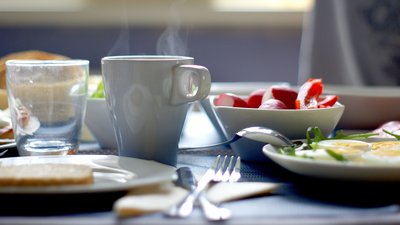The warm weather is here, and that means vacation time! But rather than counting down the days happily, you're at home biting your nails and worrying about how on earth you're going to survive seven days without a food scale and Tupperware.
I get it! When you're committed to eating clean, even a short work trip is a logistical battle, let alone a longer trip where the focus is supposed to be on having a great time! If you let your mind and your macros consume you, you'll insert a sour note into the vacation not only for yourself, but also those with whom you're traveling.
Luckily, mastering "good enough" nutrition on vacation doesn't have to be a struggle. Here are four ways to maintain your meal plan without sacrificing fun during your getaway!
1. Eat Three Meals and One "Bridge" Per Day
If you're like me, you're definitely going to want to eat and take advantage of the scrumptious, prepared-by-someone-else food that's available to you on vacation. Heck, this is the main reason I go on vacation!
So how do you balance it with the 5-6 tightly controlled meals you normally eat every day? Well, you don't. When tasty food is all around, I recommend reducing the number of meals you eat to three per day, which will afford you more calories per meal. Rather than distributing 1800 calories over six meals, you can now do it over 3 meals, which is double your usual calories per meal. Woohoo, seconds!
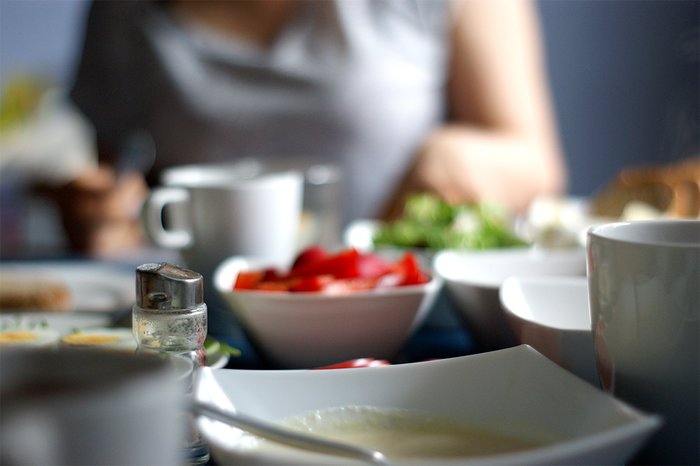
Reduce the number of meals you eat to three per day, which will afford you more calories per meal.
Given that you're going to have to go long stretches between these meals, you might still find yourself ravenous simply out of habit. When this happens, don't submit to the mindless snacking urge, which is where things usually get out of hand on vacation. Instead, reach for a high-protein "bridge" like a shake, or even better, a protein bar. If you can get 20 grams of protein and 10 or more grams of fiber, it will do plenty to help you last until your next glorious meal.
When do you have your daily bridge? Whenever you need it. It's an excellent option after you squeeze a quick workout in, or to have on hand during your midmorning hike or afternoon exploration.
Another advantage of the bar: no traveling with powders, no TSA hassle, and no shaker bottle to worry about washing in a hotel sink. This is exactly the sort of situation that bars were made for!
2. Prioritize Protein and Veggies During Meals
It's simple: Protein and veggies first, then the other stuff. This is an approach I bring up frequently when discussing diet strategies, for the simple reason that it works.
Protein is a versatile nutrient that provides benefits on multiple fronts. If you're dieting, it helps to slow down digestion and promote fullness. So when you're faced with a never-ending spread of premium protein and delicious treats, you'll be able to keep portions in check by tackling the protein first.
Vegetables, on the other hand, are high in fiber and are composed of nearly 90 percent water. This bodes well if you're keeping an eye on calories, because both fiber and a high water content add bulk to your meal and stretch your stomach. This is a satiety signal that triggers the brain to release a "cease eating" command.
By the time you tackle your protein and a salad, there won't be much room left in your stomach for treats. You'll still be able to eat that Nutella soufflé or Oreo cheesecake truffle you've had your heart set on, but not a heaping helping of it. You'll be mentally satisfied while still looking like you've picked up a weight or two in your time.
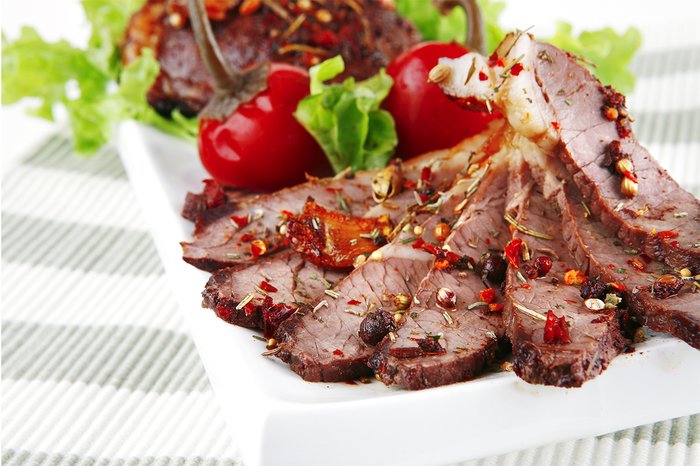
Start both lunch and dinner with protein and a large, colorful salad to keep portions in check during the meal ahead.
3. Hydrate, Hydrate, Hydrate
If you fill your stomach with water, you'll have a tough time filling it with excessive food, too. To crush cravings and keep portions in check, make hydration a top priority both in between and during meals.
Keep a water bottle with you at all times throughout the day, and drink from it frequently. Yes, even between sips of the good stuff. Before all meals, down 12-16 ounces of water to take up space in your stomach. Then, drink another glass or two of water with your meal.
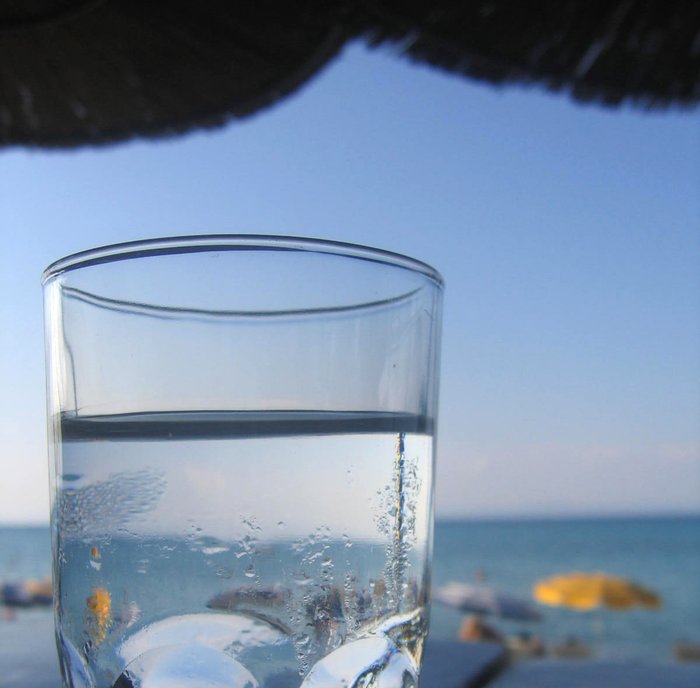
4. HIIT The Ground Running Most Days
Okay, you don't have to actually run, but you should get up and get sweaty most mornings while you're on vacation. A morning exercise session will increase the number of calories you burn throughout the day, but also make sure those dessert-like pancakes you've had your eyes on all week mainly go toward glycogen replenishment rather than fat storage.
To truly maximize your time—which is crucial on vacation—caloric burn, and post-workout meal, ditch the split and focus on high-intensity interval training (HIIT). A study published in the Journal of Applied Physiology, Nutrition, and Metabolism found that it took just 20 minutes of HIIT to burn the same number of calories over a 24-hour period as 50 minutes of steady-state exercise.[1] This means more time in the sun!
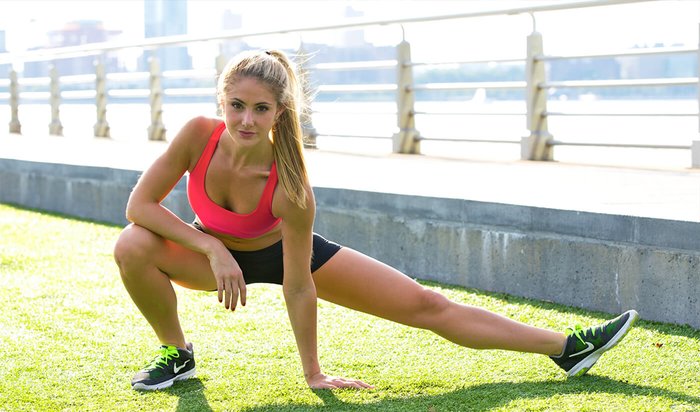
20 minutes of HIIT will burn the same number of calories over a 24-hour period as 50 minutes of steady-state exercise.
The rest of the day, take advantage of the freedom from normal life and get moving. Plan outdoor excursions, walk on the beach, see the sights, and explore a new city. This is an excellent way to make the most of your vacation while also working to offset your unavoidable increase in food.
It Doesn't Have to Be a Struggle
Your vacation should be a getaway from work stress, life stress, and yes, even the stress of meal prep. But if you're like most fitness enthusiasts, your knowledge may get the best of you at times and leave you too locked into tracking every gram that enters your body. Following these strategies will help you keep stress to a minimum and enjoyment and portions front and center!
References
- Skelly, L. E., Andrews, P. C., Gillen, J. B., Martin, B. J., Percival, M. E., & Gibala, M. J. (2014). High-intensity interval exercise induces 24-h energy expenditure similar to traditional endurance exercise despite reduced time commitment. Applied Physiology, Nutrition, and Metabolism, 39(7), 845-848.

